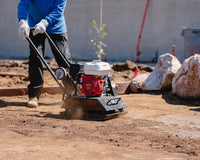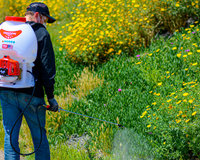Why Seal Your Patio—and When
Sealing pavers is one of the most effective ways to protect your outdoor space from stains, weather damage, weed growth, and fading. While not always necessary, it can dramatically extend the life of your patio and enhance its appearance—especially if you want that “wet look” finish.
If you're planning to apply a DIY patio sealant, timing is key. Wait 60–90 days after installation to allow the pavers to cure and release any surface salts. This ensures a clean, dry surface that will allow the sealer to bond properly.
“Quality means doing it right when no one is looking.”
— Henry Ford
And doing it right starts with the correct preparation and application process.
Step-by-Step Paver Sealing Guide
Here’s how to seal pavers properly for the best long-term protection:
1. Clean the surface thoroughly
-
Use a stiff broom and power washer to remove dirt, stains, and efflorescence.
-
Let it dry completely—24 to 48 hours is ideal.
2. Refill the joints
-
Sweep in polymeric sand to fill the joints between pavers.
-
Compact with a plate compactor for even settling.
-
Remove excess sand from the surface.
3. Compact the surface again
-
Final compaction ensures the sand locks into joints and the base settles firmly.
-
Use a lightweight model like the Tomahawk JXPC50H Plate Compactor, which offers 1,420 lbs. of force—perfect for residential patios.
4. Apply the sealer evenly
-
Use a low-pressure sprayer or roller to apply the sealer in thin, even coats.
-
Follow manufacturer directions and allow proper drying time (usually 24–48 hours).
5. Allow to cure fully before heavy use
-
Avoid furniture placement and foot traffic until the sealer is fully cured.
“The details are not the details. They make the design.”
— Charles Eames
And sealing is one of those details that elevates both protection and aesthetics.









